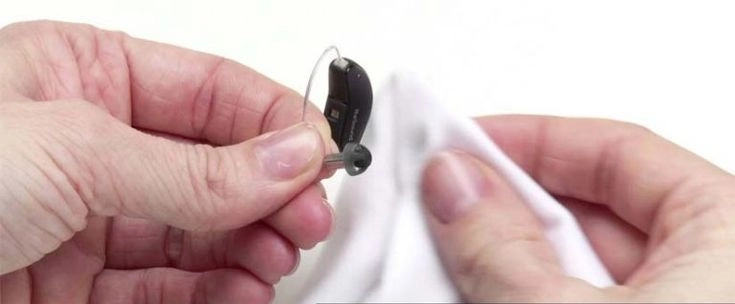Why is hearing aid care important?
A hearing aid isn’t just a device – it’s your connection to the world. If neglected, it can degrade, sound quality drops, and it may stop working entirely. Want stable, long-term hearing? Follow the tips in this article.
Types of hearing aids and care differences
In-the-Ear Hearing Aids (ITE)
Located inside the ear, so they collect more wax and moisture. Require regular cleaning.
Behind-the-Ear Hearing Aids (BTE)
Larger and stronger devices. Tubing and earmold need separate cleaning.
RITE and RIC Models
Slimmer with sensitive microphone components. Clean gently and with care.
Daily maintenance habits
Surface cleaning
Wipe daily with a soft, dry cloth to remove dirt and dust.
Cleaning microphone and sound outlet
Dust in these areas affects sound. Use a soft brush.
Cleaning earmolds
Removable molds should be washed weekly with warm soapy water and dried thoroughly.
Protection from moisture and humidity
Use of drying containers
Store the device at night in special dry containers to absorb moisture.
What to do if it gets wet?
Turn it off immediately, remove the battery, store in a dry box. Never use a hairdryer!
Battery and power maintenance
Proper battery storage
Remove batteries when not in use. Fully turn off the device to extend battery life.
Rechargeable devices
Keep adapter and cable clean. Avoid overcharging.
How to store the device properly
At home or while traveling
Store in a hard case, away from moisture and sunlight.
Protection from physical damage
Do not keep it loose in a bag or pocket with other items.
Importance of regular professional checkups
When to see an audiologist?
Every 6 months, have the device professionally checked.
Software updates and firmware
Some models require updates — contact your audiologist.
Care differences for summer and winter
In hot weather
Sweat increases moisture risk. Use daily drying methods.
In cold weather
Cold affects batteries. Always carry a spare battery.
Special care for children's hearing aids
Parental supervision
Check the child’s device daily for cleanliness and function.
Child-friendly accessories
Use protective covers, clips, and holders to prevent damage or loss.
What not to use for cleaning
Risk of alcohol-based cleaners
They can damage electronics and plastic parts.
Hand sanitizers
Chemicals in them can corrode surfaces.
Essential care tools
Cleaning kits
Includes brushes, air blowers, and special cloths.
Brushes for earmolds
Use soft, detailed brushes for gentle cleaning.
Tips to maintain performance
Sound quality checks
If sound degrades, it may signal cleaning or technical issues.
Preventing unexpected issues
Daily maintenance and timely checkups ensure reliability.
Common misconceptions about hearing aid care
“No maintenance is needed”
Even modern devices need attention to last.
“Water-resistant means waterproof”
Even water-resistant models shouldn’t be exposed constantly.
Expert tips for longevity
Audiologist advice
“Maintenance = Quality Hearing”. Care for your device and it will serve you better.
Annual checkups and updates
Multiple checkups yearly can prolong device life by years.
Conclusion
Proper hearing aid care ensures it remains reliable and effective. With daily cleaning, protection, and smart storage, you’ll enjoy clear sound much longer.
Frequently Asked Questions (FAQ)
Is daily cleaning necessary? — Yes.
What if the device gets wet? — Turn it off, remove battery, store in dry box.
Should I always use a drying capsule? — Especially in summer or humid areas — yes.
Can I use alcohol to clean it? — No.
How often should I see an audiologist? — Every 6 months.



